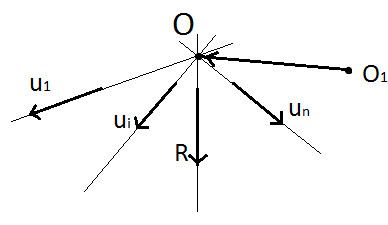 | ||
The Varignon Theorem is a theorem by French mathematician Pierre Varignon (1654-1722), published in 1687 in his book Projet d'une nouvelle méchanique. The theorem states that the moment of a resultant of two concurrent forces about any point is equal to the algebraic sum of the moments of its components about the same point. In other words, "If many coplanar forces are acting on a body, then the algebraic sum of moments of all the forces about a point in the plane of the forces is equal to the moment of their resultant about the same point."
Proof
For a set n of vectors
The moment of each vector is:
In terms of summary, taking out the common factor
